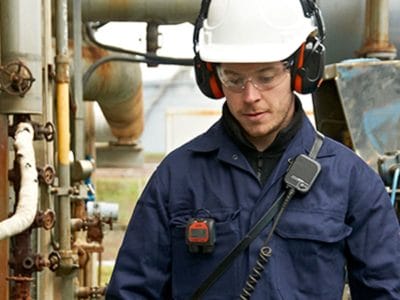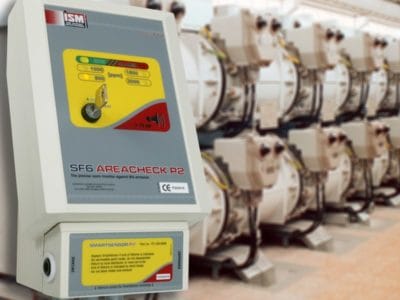
Detecting Volatile Organic Compounds (VOCs)
VOCs are chemical compounds, they are described as volatile because they evaporate easily, releasing molecules into the atmosphere, your exposure to VOCs can be monitored using gas detection equipment.
ION Science manufactures gas detection equipment for monitoring exposure to toxic levels of volatile organic compounds (VOCs).
What is a Volatile Organic Compound?
Volatile organic compounds (VOCs) are substances with low boiling points that evaporate from solids or liquids used in industrial processes, for example formaldehyde evaporating from paint, or benzene from fuel.
– GOV.UK
Health and Safety Issues
As Volatile Organic Compounds exist as a gas at room temperature the main exposure route is through normal respiration. Exposure to harmful VOCs can happen at home, outdoors, or in the workplace.
Air Pollution
Air pollution is now something we are all aware of and is often included alongside UV levels on weather forecasts. Volatile Organic Compounds are themselves directly an air pollutant but also have secondary effects. When sunlight and heat react with VOCs, sulfur dioxide, and nitrogen oxides (gasses released from many industrial processes and vehicles) ozone is generated, and smog is formed.
The individual components of smog can compromise human health and harm the environment –mixed together they form a deadly cocktail. Smog can cause or aggravate health problems such as asthma, emphysema, chronic bronchitis, and other respiratory problems. The ozone in the smog also inhibits plant growth and can cause widespread damage to forests and crops.
These and other potentially hazardous volatile organic compounds including benzene, toluene, ethylene, xylene, and formaldehyde require careful monitoring.
”The ability of organic chemicals to cause health effects varies greatly from those that are highly toxic, to those with no known health effect. As with other pollutants, the extent and nature of the health effect will depend on many factors including level of exposure and length of time exposed.
United States Environmental Protection Agency
Clean Air Strategy 2019
To further address the health and safety and environmental issues surrounding air pollution, in January 2019 the UK government launched a Clean Air Strategy to outline how they will tackle all sources of air pollution, making the air healthier to breathe, protecting nature and boosting the economy.
The strategy sets out how the government will:-
- protect the nation’s health
- protect the environment
- secure clean growth and innovation
- reduce emissions from transport, homes, farming and industry
- monitor our progress
– Clean Air Strategy (GOV UK)
Global Guidelines
The legal limits on emissions of and exposure to VOCs vary from place to place, and are set by authorities including the European Union and the United States Occupational Safety and Health Administration OSHA. In the UK, there are currently no indoor air quality guidelines for individual volatile organic compounds. In their absence, the recently revised Department for Education Guidance BB101: Ventilation, thermal comfort and indoor air quality (DfE, 2018) recommended the use of the WHO (2010) Indoor Air Quality (IAQ) guidelines.
Fixed, Portable and Personal VOC Detection
There are many tools available for the detection of VOCs.
A commonly used, proven method that rapidly detects a wide range of VOC over the concentrations of interest is photoionisation detection (PID). PIDs are available in a number of forms, including PID sensors and fixed, portable and personal PID instruments.
Factories and other places where VOCs are routinely present will monitor their environment and surroundings by using Fixed VOC detectors. These instruments are permanently installed and provide continuous measurement of volatile organic compounds in the air they sample.
A Portable VOC detector, which is a lightweight instrument, may be used in conjunction with a fixed VOC detector to provide spot measurements. Small, lightweight VOC detectors may be attached to clothing as part of the personal protective equipment issued to workers. They are used to locate and measure VOCs in any place where they might be present, either indoors or outdoors. This may be as the result of a spill, machinery breakdown, or other unexpected events. The portable VOC detector is useful for checking confined spaces such as inside pipework and sewers, in industrial safety and hygiene, and in decontamination monitoring.
A Personal gas detector and monitor allows workers to operate in the toughest of industrial environments including hazardous areas and confined space, with personal protection detecting and alerting you of dangerous levels of gases.
Download our FREE Guide
“What is a Volatile Organic Compound?”
The what is a volatile organic compound guide which can be downloaded below provides the reader with an in-depth balance of knowledge outlining what a VOC is and the common environments in which you are most likely to come into contact/exposed to these airborne compounds. We also discuss the wide range of tools that are available on the market to detect such volatile organic compounds.




















